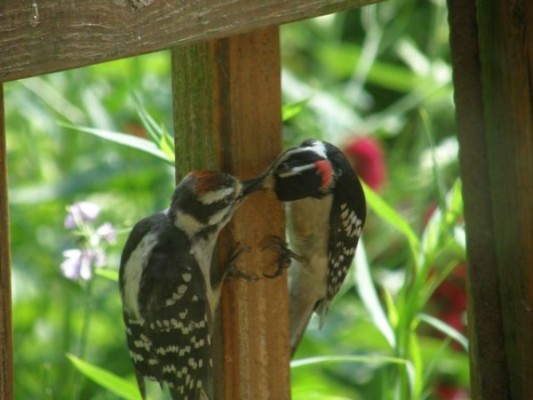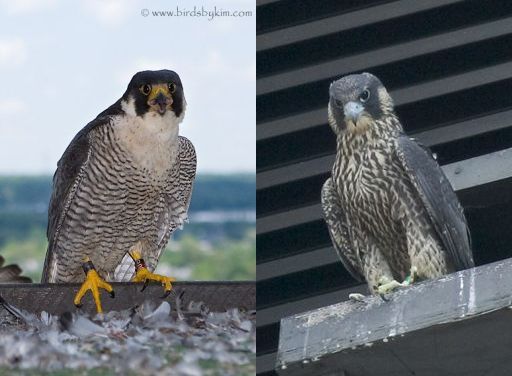
In most bird species by the time baby birds leave the nest they resemble their parents, but they don’t look quite the same. The young are still in juvenile plumage.
Peregrine falcons, for instance, are the same size and shape as their parents but the juveniles are brown and cream colored where the adults are charcoal gray and white. The juvenile plumage lasts two years and may protect young peregrines from attack by territorial adults. (“I’m too young to breed. Don’t hit me!”)

Pictured at top, the two downy woodpeckers are parent and child. You can tell who’s who by their behavior — the parents feed their kids. You can also tell by plumage.
On Throw Back Thursday, learn the color differences between juvenile and adult male downy woodpeckers at They Almost Look Alike (from 2008).
(photo credits: downy woodpeckers by Marcy Cunkelman, peregrine falcon photos by Kim Steininger)
Hi Kate, thanks for the info! In these photos above, to me the adult looks brown and cream colored while the juvenile looks charcoal grey and white(?) Maybe something about the lighting?
Cheers, Marta
Marta, yes it is confusing. In real light they look different. Notice that the juvie is vertically striped right up to its chin while the adult has white chest and horizontal stripes.
Ah, I see! Thanks (: